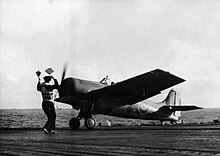
The Fairey Swordfish is a biplane torpedo bomber, designed by the Fairey Aviation Company. Originating in the early 1930s, the Swordfish, nicknamed "Stringbag", was principally operated by the Fleet Air Arm of the Royal Navy. It was also used by the Royal Air Force (RAF), as well as several overseas operators, including the Royal Canadian Air Force (RCAF) and the Royal Netherlands Navy. It was initially operated primarily as a fleet attack aircraft. During its later years, the Swordfish was increasingly used as an anti-submarine and training platform. The type was in frontline service throughout the Second World War.

HMS Biter was a Royal Navy escort carrier during the Second World War. She was laid down as a merchant ship at the Sun Shipbuilding & Drydock Company yard at Chester, Pennsylvania. Laid down on 28 December 1939, she was converted to an escort carrier and commissioned in the Royal Navy on 6 May 1942. She was returned to the United States in 1945 and subsequently lent to France.
835 Naval Air Squadron was a former squadron of the Royal Navy's Fleet Air Arm originally formed in February 1942 as a torpedo bomber and reconnaissance unit flying Fairey Swordfish. In June 1943, six Sea Hurricanes were added to the squadron as a fighter flight. The composite unit exchanged the Hurricanes in September 1944 for Grumman Wildcats, serving on until 1 April 1945, when the squadron disbanded.
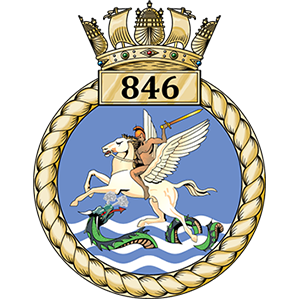
846 Naval Air Squadron is a squadron of the Royal Navy's Fleet Air Arm.
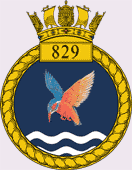
829 Naval Air Squadron was a squadron of the Royal Navy Fleet Air Arm. Before it was decommissioned in March 2018, it operated the AgustaWestland Merlin HM2 helicopter.
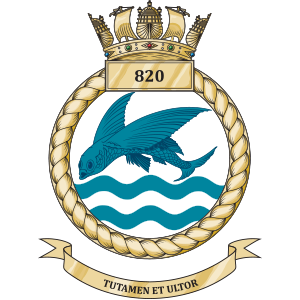
820 Naval Air Squadron is a Royal Navy Fleet Air Arm carrier-based squadron flying the AgustaWestland Merlin HM2 in an Anti-Submarine role from RNAS Culdrose.
810 Naval Air Squadron was a Royal Navy Fleet Air Arm carrier based squadron formed on 3 April 1933 with the amalgamation of the 12 Blackburn Dart aircraft from 463 and 44 Flight Flights Royal Air Force to the Fleet Air Arm. The squadron saw action during the Second World War, the Suez Crisis and the Korean War.

808 Naval Air Squadron is a ship-based helicopter squadron of the Royal Australian Navy.
818 Naval Air Squadron was a Royal Navy Fleet Air Arm carrier-based squadron formed in August 1939. It served on a number of the Navy's aircraft carriers during the Second World War, serving in most of the theatres of the war, before decommissioning at the end of the war.
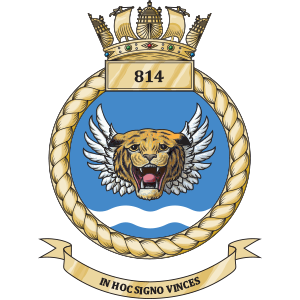
814 Naval Air Squadron or 814 NAS, nicknamed the Flying Tigers, is a squadron of the Royal Navy Fleet Air Arm. It is currently equipped with the AgustaWestland Merlin HM2 anti-submarine warfare helicopter and is based at Royal Naval Air Station (RNAS) Culdrose in Cornwall. The squadron was formed in December 1938 and has been disbanded and reformed several times.
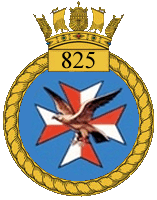
825 Naval Air Squadron is a Royal Navy Fleet Air Arm Naval Air Squadron which was re-commissioned on 10 October 2014 and currently flies the AgustaWestland Wildcat HMA2.

813 Naval Air Squadron was an aircraft squadron of the Royal Navy's Fleet Air Arm during World War II and again post-war. It initially operated Swordfish Mk Is from the aircraft carrier Illustrious and took part in the successful raid on Taranto in November 1940.
812 Naval Air Squadron was a Naval Air Squadron of the British Royal Navy's Fleet Air Arm. It was active between 1933 and 1956, and saw service in both World War II and the Korean War.

826 Naval Air Squadron was a Fleet Air Arm aircraft squadron formed during World War II which has been reformed several times since then until last disbanded in 1993.
899 Naval Air Squadron was a squadron of the Fleet Air Arm of the United Kingdom.
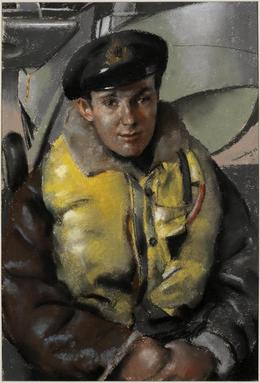
Captain Frederick Stovin-Bradford was a Royal Navy officer and aviator in the Fleet Air Arm. During his career, Stovin-Bradford was involved in the sinking of the Italian submarine Iride, was one of the youngest officers to be promoted to the rank of captain since Nelson's time, and served as Staff Officer to the Flag Officer of Home Air Command in England and later Chief Staff Officer to the Flag Officer in charge of East Australia. His obituary in The Times described him as one of the most colourful personalities in the Fleet Air Arm.

751 Naval Air Squadron was a Naval Air Squadron of the Royal Navy's Fleet Air Arm. It was initially active as an Observer Training Squadron from 1939 to 1944 as part of No.1 Observer School. 751 NAS formed at RNAS Ford in May 1939. Ford was attacked and bombed, in August 1940, and the following day the squadron relocated to RNAS Arbroath. Twelve months later it moved to RNAS Dundee, remaining there until disbanding at Dundee in May 1944.

763 Naval Air Squadron was a Naval Air Squadron of the Royal Navy's Fleet Air Arm. It formed in 1939 as the Torpedo Spotter Reconnaissance Pool No. 1, at RNAS Worthy Down. Three months later, it moved to the short-lived RNAS Jersey, before moving back to Worthy Down via RNAS Lee-on Solent and disbanding in 1940. The squadron reformed, on the seaplane carrier HMS Pegasus, as a Seaplane Training Squadron, in 1942. This role lasted around two years and the squadron continually operated and provided training from HMS Pegasus, until disbanding in 1944. Roughly two months later, the squadron reformed again, this time at RNAS Inskip, as an Anti-submarine Operational Training Squadron and remained in this role for just over one year, disbanding in July 1945 at Inskip.

767 Naval Air Squadron was a Naval Air Squadron of the Royal Navy's Fleet Air Arm. It was initially formed as a Deck Landing Squadron in 1939, when 811 Naval Air Squadron was renumbered 767 NAS, at RNAS Donibristle. A detachment went to Hyeres de la Palyvestre in the south of France, enabling training in fairer conditions. While here, the squadron took on an operational mission, with a bombing attack on the Italian port of Genoa. With the fall of France the squadron evacuated to Algeria, where it split. Part went to Malta, forming 830 Naval Air Squadron, the other part to HMS Ark Royal, with personnel returning to the UK via Gibraltar. The squadron regrouped at RNAS Arbroath and moved to the Deck Landing School at RNAS East Haven in 1943.

791 Naval Air Squadron was a Naval Air Squadron of the Royal Navy's Fleet Air Arm. It formed as an Air Target Towing Unit, at RNAS Arbroath, in Scotland, in October 1940. It operated various types of aircraft for target towing duties, used to support air gunnery training and practice. The squadron disbanded in December 1944, at Arbroath. It reformed at RNAS Trincomalee, in Sri Lanka, in November 1945, as a Fleet Requirements Unit. The squadron moved to RNAS Sembawang, in Singapore, in December 1945, ferried via HMS Smiter. It also operated a Communications Flight and an Air-Sea Rescue Flight, as well as undertaking anti Mosquito spraying duties. 791 NAS disbanded at Sembawang in June 1947.
